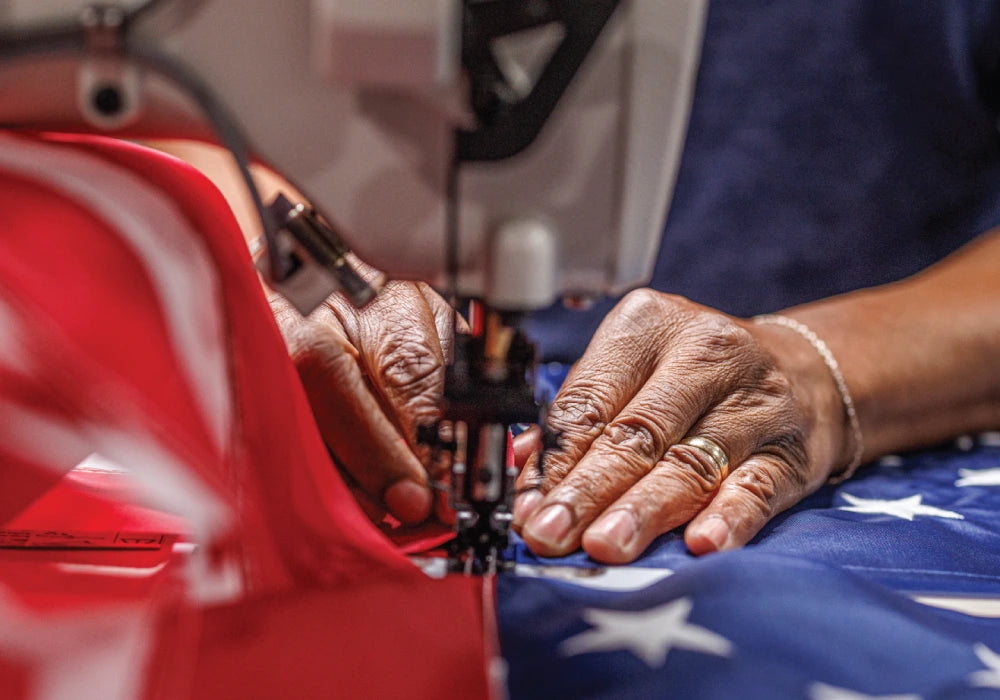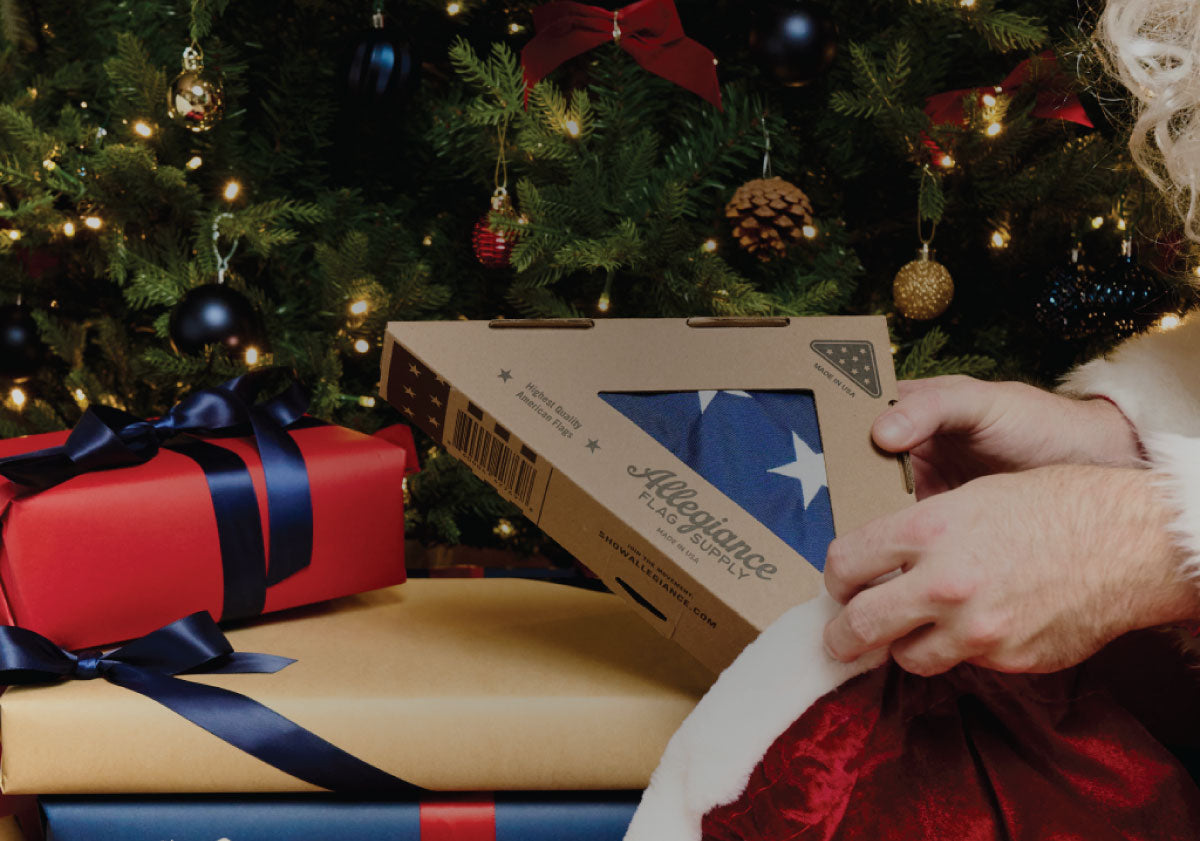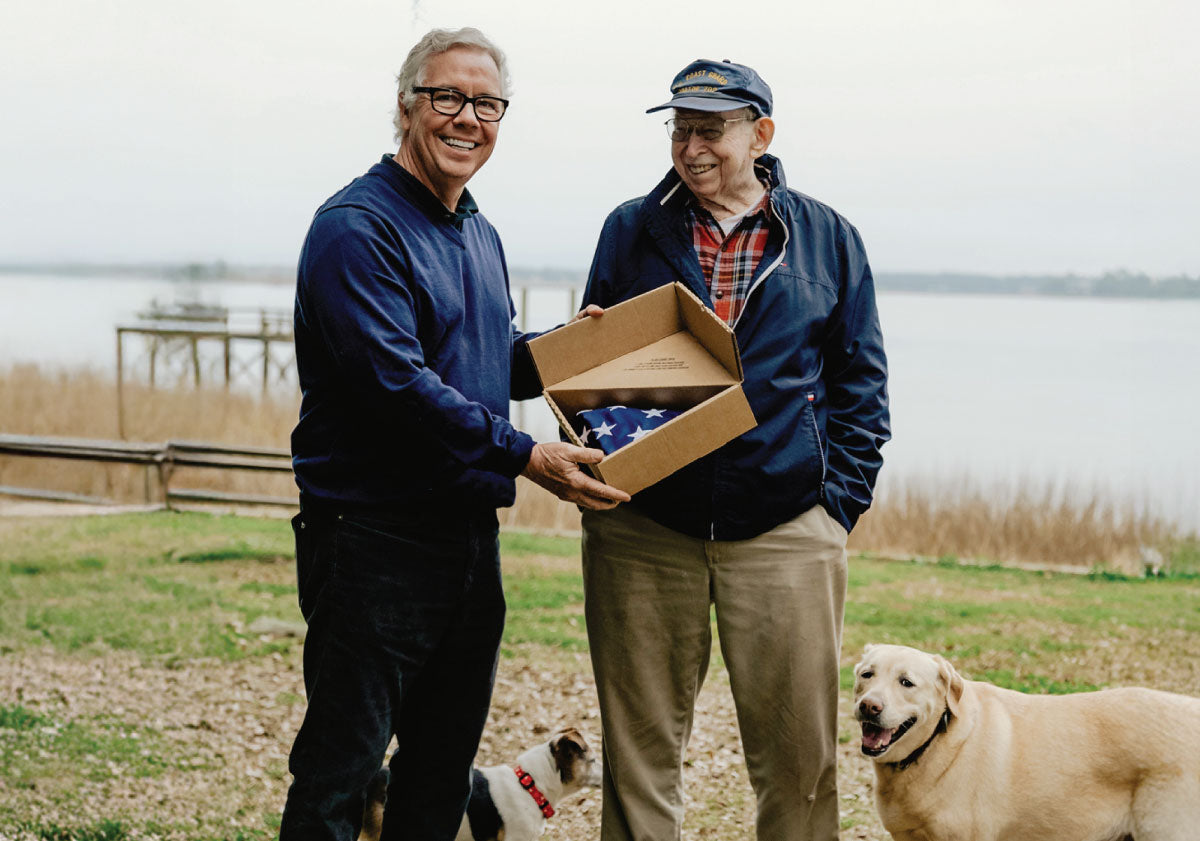From scorching summers to snow-filled winters, outdoor flags face more than just a passing breeze. Wind, rain, harsh sunlight, and even pollutants in the air can wear them down faster than you’d expect. A flag proudly displayed in your yard or on your porch isn't just about looks—it’s about honoring what it stands for. But without quality construction, even the most beautiful banner can fray or fade in just a few short months. That’s why many homeowners search for the most durable outdoor flags they can find. These flags are built to stand strong, holding their color and form despite daily wear. Whether you're celebrating a holiday or flying your flag all year, durability is essential to maintaining its bold, proud appearance over time.
Best Outdoor Flag Materials for Durability
200-Denier Commercial-Grade Nylon
Nylon is a trusted option when it comes to flags that flutter beautifully and hold up under pressure. The 200-denier commercial-grade variety is especially popular for its balance of strength and weight. It’s lightweight enough to catch the breeze and fly proudly even on calm days, but still tough enough to resist tearing during windier conditions. Many weather-resistant flags use this type of nylon because it dries quickly after rain and doesn’t sag when damp. The weave is tight, yet flexible, making it ideal for regions with shifting weather patterns. Nylon flags can offer years of performance while maintaining vivid color when stitched properly.
Two-Ply Polyester
If your home sees constant wind or salty sea air, you’ll want something even more rugged than nylon. Two-ply polyester is a heavyweight material built for battle against nature’s roughest elements. With its double-layered design, it offers unmatched durability, perfect for coastal areas and open spaces where winds are strong and constant. Its heavier texture helps it maintain its form even in aggressive weather. This type of fabric is especially popular for those shopping for the most durable outdoor American flag because it’s abrasion-resistant and designed to endure gusts that would shred cheaper materials.

Spun Cotton Blends
The appearance of your flag matters just as much as its performance. Spun cotton blends offer a heritage-inspired look that feels timeless. Though not as resilient as synthetic options, they still perform well in moderate climates. These flags are often used for ceremonial or historical displays, where authenticity is key. Cotton blends have a soft texture that lends a vintage charm, making them ideal for individuals who value craftsmanship over pure toughness. When used on covered porches or during special events, they strike a perfect balance between tradition and style. Many who invest in American flags for home prefer this fabric for its classic aesthetic that speaks to history.
Solution-Dyed Fabrics
Solution-dyed materials tackle this issue at the source. Instead of applying color to the surface after weaving, these fabrics are dyed during the fiber creation process. This means each fiber carries color throughout, rather than just on the outside. As a result, flags made with solution-dyed fabrics resist fading much better than others. This technique helps ensure your fade-resistant flags remain vibrant, even after months in the sun.
Weather-Resistant Construction Techniques
Four-Row Lock Stitching
Even the strongest flag material can’t last without solid stitching to back it up. Four-row lock stitching is a method used on the fly end. With four rows of tightly sewn stitches, each line reinforces the other, creating a durable edge that resists fraying and tearing. This is paired with a reinforced fly end, which adds extra fabric or a double-needle hem for added strength. When shopping for long-lasting flags, this kind of construction is essential.
UV-Inhibitor Dyes
Sunlight is often the silent destroyer of outdoor flags. Here are reasons why UV-inhibitor dyes make a major difference:
- Extended Color Life: One of the most visible advantages of UV-inhibitor dyes is their ability to prolong the color vibrancy of outdoor flags significantly. Standard dyes, when exposed to prolonged sunlight, begin to oxidize and fade, causing even the boldest flags to become dull or washed out. This is especially noticeable with red and blue hues, which are more susceptible to UV damage. UV-inhibitor dyes incorporate light-blocking agents that protect the pigment at a molecular level, slowing the bleaching effect and maintaining the flag’s original appearance. This is crucial for maintaining a respectful and dignified appearance, whether the flag is flown daily or reserved for holidays and special occasions.
- Fabric Preservation: Exposure to intense sunlight can cause the flag’s fibers to degrade, making them brittle and more prone to tearing. UV-inhibitor dyes help combat this by minimizing the penetration of ultraviolet radiation into the fabric weave. This protective quality helps preserve the flag’s physical integrity, allowing it to endure outdoor conditions without premature wear. Whether your flag is made of nylon, polyester, or a blend, UV-inhibitor treatment reduces the rate at which the material dries out and deteriorates. This added protection is critical in high-sun regions or during peak summer months when exposure is constant.
- Cost Efficiency: Regular exposure to sunlight can wear out untreated flags within just a few months, especially in climates with strong UV indexes. This results in frequent replacements, not only driving up costs but also increasing maintenance demands. By contrast, a UV-protected flag retains both its color and strength longer, meaning fewer replacements per year and less time spent shopping for or installing new flags. Over a period of several seasons, this longevity translates into notable cost savings, particularly for institutions or businesses that maintain multiple flagpoles. Investing in durability at the outset proves far more economical than repeating the purchase cycle with lower-quality alternatives.
- Improved Appearance: A faded or weathered flag may appear neglected or worn, even if it was only recently purchased. UV-inhibitor dyes help prevent this by preserving the richness of the fabric’s colors and the sharpness of printed or stitched details. Whether flying daily outside a government building or reserved for special events at a yacht club, a flag that maintains its vibrant appearance contributes to a polished and respectful display. This level of presentation matters not only for patriotic significance but also for aesthetic harmony with the surrounding décor or architecture.
- Environmentally Responsible: Sustainability often starts with durability, and UV-inhibitor dyes contribute to that effort by helping flags last longer and reducing the need for frequent replacements. By extending the lifespan of each flag, UV-treated designs help reduce landfill waste and lessen the environmental impact associated with continuous production. Fewer discarded flags also mean less textile waste overall, particularly important in regions where recycling fabric materials is limited.
Understanding how each fabric holds up to sun, wind, and water helps you choose a flag that lasts and looks great on your boat.

Corrosion-Resistant Brass Grommets
Moisture corrodes metal over time, especially in salty air. That’s where brass grommets come in. Brass is naturally resistant to corrosion, meaning it doesn’t rust or weaken when exposed to the elements. Flags equipped with these maintain their strength, even after multiple seasons outdoors. They also offer a firm grip on halyard hooks or mounting rings, reducing the chance of tearing under stress. For anyone living in coastal areas or humid regions, American-made outdoor flags with brass grommets are a smart investment.
Choosing a Heavy-Duty Flag Pole That Lasts
Material Comparison
Different materials offer different advantages. Powder-coated aluminum is lightweight, rust-resistant, and ideal for homeowners who prefer easy installation with minimal upkeep. Fiberglass poles are slightly more flexible, which helps them absorb strong wind gusts without snapping or bending. Steel, while heavier, offers unmatched strength and is often chosen for permanent displays in public or commercial spaces. The key is knowing what your environment demands. If you're looking for a heavy-duty flag pole that can handle both time and weather, consider how each material reacts to rain, wind, and sun. Each has its pros and cons, so match your pole to the challenges of your location.
Mounting Hardware
Stainless steel fittings resist rust and won’t corrode, which is especially important in environments with high rainfall or salt exposure. Rotating trucks allow your flag to move freely with the wind, preventing it from wrapping around the pole. This reduces fabric strain and keeps the flag looking crisp and functional. For people purchasing a complete American flag pole set, ensuring that it comes with high-quality hardware means fewer maintenance issues down the line.
Matching Flag and Pole Sizes
An often overlooked but critical factor in flag display is the ratio between your flag and the pole height. Here’s a quick guide for common flag and pole combinations:
- 3x5 ft flag – Best with 20 ft pole
- 4x6 ft flag – Pairs well with 25 ft pole
- 5x8 ft flag – Needs a 30 ft pole for proper proportion
- 6x10 ft flag – Should be flown on a 35–40 ft pole
- 8x12 ft flag – Ideal for poles 50 ft or taller
If you're in the market to buy outdoor American flags, make sure to also double-check pole height recommendations. Many retailers offer bundles with matching flags and poles for easy setup.
Maintenance Tips to Extend Flag Life
Lowering Flags During High Winds and Storms
One of the most effective ways to prevent premature flag damage is to bring it down during inclement weather. High winds can tug aggressively at the fabric, putting strain on seams, grommets, and the pole itself. Even the strongest materials have their limits, and allowing a flag to whip violently in a storm often leads to frayed edges and torn stitching. Homeowners who take the time to lower their flags when rough weather is significantly forecasted improve the longevity of their display. It’s a practical step in caring for an item that holds symbolic importance. For those who want to protect durable outdoor flags, this habit is a simple yet impactful routine.
Rinsing Salt Spray
Salt crystals build up on flag fibers, attracting moisture and causing stiffness and discoloration over time. This salt, combined with constant humidity, creates the perfect conditions for mildew growth. To avoid this, it's essential to rinse flags with clean water regularly and hang them to dry fully before the next use. Even a quick spray with a hose followed by overnight drying can make a significant difference in maintaining color and texture. People who fly USA porch flags especially benefit from these simple care steps.
Replacing Halyards
Regular inspections enable you to identify signs of wear early and replace aging parts before they fail. In addition to halyard care, it’s smart to check that cleats, hooks, and fasteners remain secure and corrosion-free. Tension in these parts plays a key role in how well your flag flies and whether it stays stable during high winds. Keeping fittings in working order is vital for anyone who invests in heavy-duty flags, as strong fabric alone isn’t enough without solid hardware to match.
Rotating Flags and Using Quick-Dry Finishes
Displaying a single flag nonstop will inevitably expose it to uneven wear. Rotating flags seasonally allows for more balanced wear and keeps your display looking fresh. Additionally, choosing flags treated with quick-dry finishes helps prevent sagging after rain. Flags that retain water for extended periods become heavy and distorted, placing additional pressure on grommets and seams. These water-resistant coatings enable the fabric to shed moisture quickly, allowing it to return to its intended shape more rapidly. People searching for the best US flag for outdoors often favor quick-dry models for precisely this reason, as they preserve structure after every storm.
Buying American-Made Outdoor Flags
Supporting domestic manufacturing is one of the most impactful decisions you can make when purchasing a flag. Flags produced in the United States and certified by the Flag Manufacturers Association of America (FMAA) guarantee adherence to strict quality standards and ethical production practices. This certification ensures that materials are responsibly sourced, workers are paid fair wages, and the end product reflects American values. For homeowners who take pride in their displays, choosing US yard flags adds a layer of integrity to the gesture.

Quality flags may require a larger upfront cost, but they save far more in the long run. When made from the right materials and mounted on durable hardware, a flag doesn’t need to be replaced season after season. This long-term value also reduces the number of resources consumed and waste generated. Fewer purchases mean fewer discarded flags and less energy spent on production. Opting for a weather-resistant American flag porch banner backed by strong construction is a decision rooted not only in patriotism but also in practicality. The result is a display that endures and reflects conscious ownership.






